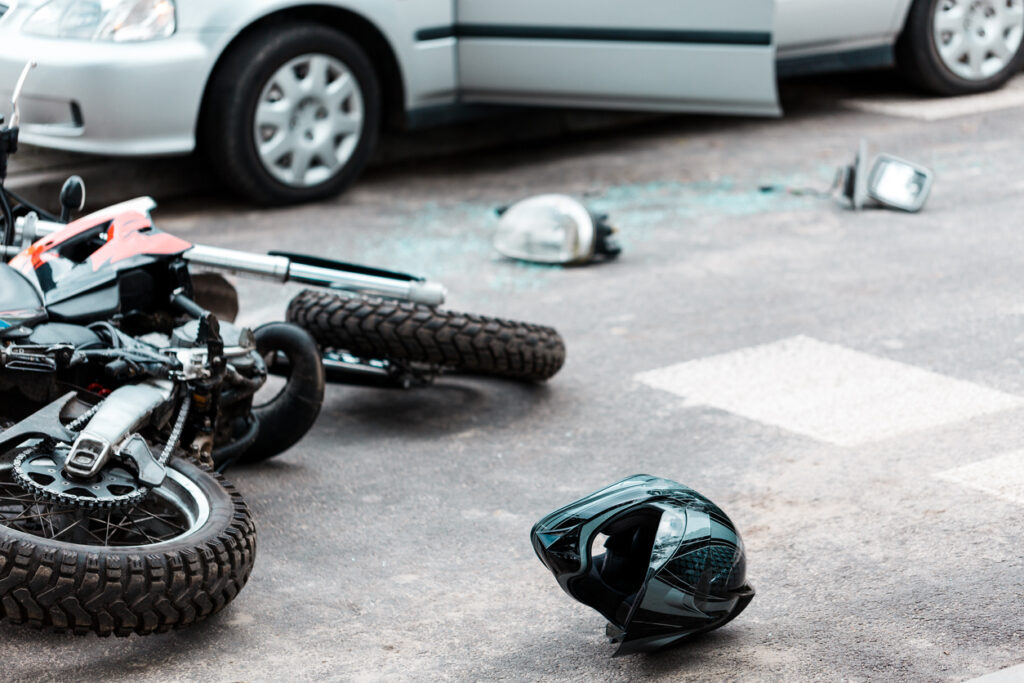Understanding Road Rash: Causes, Treatment, and Prevention

You’ve probably encountered road rash if you’re a motorcyclist or have been involved in an accident that caused skin abrasions. Although road rash is commonly considered a minor injury, it can have severe consequences.
Understanding road rash is essential whether you’re a rider or simply curious about this common injury.
Hurt? Need a Lawyer? Hire Murray
Give us a call for a FREE & CONFIDENTIAL Case Review
What Is Road Rash?
Road rash, often called skin abrasion, results from scraping the skin across rough surfaces, such as pavement. Soft tissue damage can occur on exposed body areas, like elbows, knees, hands, face, shins, ankles, and shoulders.
There are different types of road rash, including:
- Avulsion: Involves the scraping away of top skin layers, possibly exposing fatty tissue, muscle, or bone.
- Open wound: Involves tearing of the skin tissue and may require stitches.
- Compression: Occurs when a body part is trapped between two objects, like in motorcycle accidents.
Road rash is categorized by degrees:
- First-degree: Involves only the outer skin layer, causing redness and tenderness, usually not requiring medical treatment.
- Second-degree: Affects lower skin layers, often healing with at-home treatment.
- Third-degree: The most severe, involving deeper layers, muscle, or bone exposure, requiring immediate medical attention.
Symptoms of road rash include redness, swelling, bleeding, and varying degrees of pain. Seek medical attention if you detect any concerning signs.
Treating Road Rash
Minor road rash injuries can be managed at home with these steps:
- Wash your hands to prevent infection.
- Wash the wound, avoiding excessive scrubbing.
- Remove debris using tweezers if necessary.
- Pat the area dry using a clean towel.
- Spread antibiotic ointment or petroleum jelly to protect and moisturize the wound.
- Cover the wound with clean gauze or medical dressing, changing it regularly.
Medical treatment may include X-rays, deep cleansing, antibiotics, tetanus shots, and even surgery for more severe cases.
Dallas Car Accident Lawyer? Hire Murray
Give us a call for a FREE & CONFIDENTIAL Case Review
Road Rash Complications
Skin abrasions can lead to serious complications, such as infections.
Some common infections associated with road rash include:
- Staph infection: Can be resistant to antibiotics and contagious to others.
- Tetanus: Rare but can cause painful muscle spasms if bacteria enter the wound.
- Necrotizing fasciitis: Fast-spreading soft tissue death that can be life-threatening.
Watch for signs of infection like increased pain, swelling, redness, pus, and flu-like symptoms. Seek medical help immediately, especially if any of these symptoms occur.
Other complications may include scarring, joint limitations, chronic wounds, and permanent nerve or tissue damage. Scarring can be minimized by keeping the wound clean and moist and avoiding picking at scabs.
Preventing Road Rash
Prevention is key when it comes to road rash.
Riders should:
- Be aware of road conditions. Watch out for gravel, wet or oily roads, obstacles, and steep inclines.
- Wear protective gear, including helmets with face shields, jackets, pants, gloves, and sturdy boots that can provide essential protection.
- Cover up and wear long pants and sleeves, even in warm weather, to reduce exposed skin.
Road rash is a typical injury associated with motorcycle, bicycle, and pedestrian accidents but can occur in various scenarios. Understanding the types, treatment, complications, and prevention measures is crucial for anyone on wheels.
Recovery Timeline
Road rash injuries, particularly severe ones, can affect a person’s quality of life. They require a comprehensive approach to recovery and rehabilitation.
The recovery timeline for road rash injuries can vary depending on injury severity. The initial focus is on cleaning and dressing the wound to prevent infection. Seek medical attention for evaluation if necessary. Pain is a common companion during the recovery process.
Over-the-counter pain relievers or prescribed medications can help manage discomfort. You may need to change dressings if the wound is not too severe. Follow medical advice for proper wound care. Physical therapy may be necessary to regain mobility, strength, and functionality in affected areas.
Routine follow-up appointments help track healing progress and address complications. Coping with road rash injuries can be mentally challenging, as they may be affected by other injuries. Seek support from a counselor or therapist to control the stress and anxiety associated with the recovery process.
Seek Legal Help as You Focus on Recovering from Road Rash
Road rash injuries can lead to complications, such as infections, scarring, or limitations in joint mobility. Monitoring your wound’s healing progress and adhering to medical advice can help minimize these risks.
Remember that each individual’s road rash experience is unique, and recovery timelines may vary. Patience and dedication to rehabilitation are key to achieving the best possible outcome.
If you’ve suffered road rash due to someone else’s negligence, seek legal counsel from experienced motorcycle accident attorneys.
Contact Our Motorcycle Accident Law Firm in Dallas, TX
If you’ve been injured in an accident in Dallas, Texas, and need legal help, contact our Dallas motorcycle accident lawyers at Jay Murray Car Accident and Truck Accident Lawyers to schedule a free consultation today.
Jay Murray Car Accident and Truck Accident Lawyers
2512 State St,
Dallas, TX 75201
(214) 855-1420
